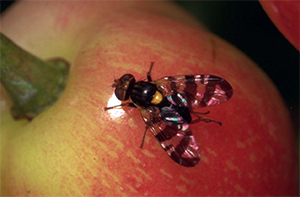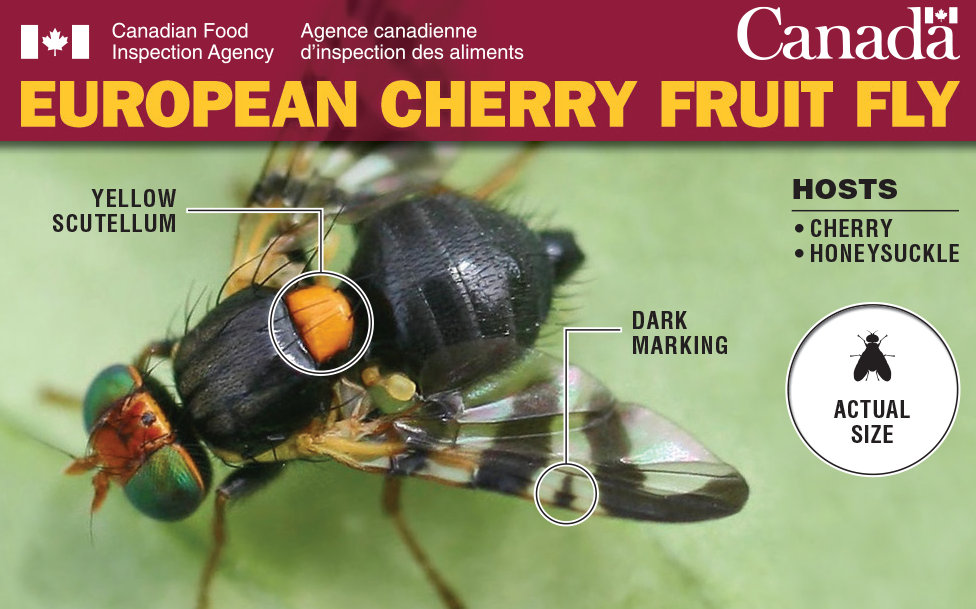
The European cherry fruit fly (Rhagoletis cerasi L.) is the most serious pest of cherries in Europe. Damage associated with this pest is caused by larval feeding in the fruit pulp, which can result in losses of up to 100% if left uncontrolled. This pest may be introduced to new areas with fresh cherries or with soil or fruit from host plants grown in areas where this pest occurs.
What information is available?
- Rhagoletis cerasi (European Cherry Fruit Fly) – Fact Sheet
- D-17-03: Phytosanitary requirements to prevent the spread of Rhagoletis cerasi L. (European cherry fruit fly) within Canada
- Report of European cherry fruit fly in Ontario (2016)
- Report of European cherry fruit fly in Quebec (2022)
- Frequently asked questions: Movement requirements for Ontario cherries
Notices to industry
Plant pest credit card: European cherry fruit fly
PDF (926 kb)


Text version
The adult is 3.5 to 4 mm long and predominantly black in colour. The wings are transparent, with characteristic dark crossbands. The scutellum of the thorax is yellow. Hosts include cherry and honeysuckle.
Signs of European cherry fruit fly include maggots in fruit, brown, rotting fruit, and maggot exit holes in cherries.
© 2017 Her Majesty the Queen in Right of Canada. Aussi disponible en français. Use without permission is prohibited.
Photo credits: R. Coutin (OPIE), C. Daniel (FiBL), www.entomart.be, J. Grunder (ZHAW). Please report suspect specimens.